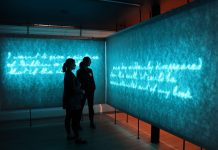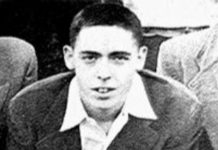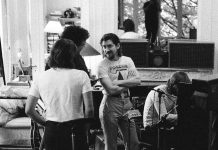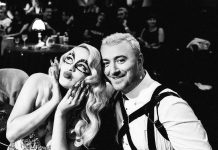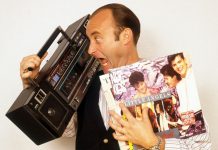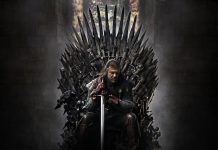In this tiny house in one of the many beach towns in California, a masterpiece of American literature was conceived. It’s a white one-bedroom duplex located at 217 33rd Street in Manhattan Beach, a downhill thoroughfare that empties into the Pacific. The ground floor has a small porch. Thomas Pynchon occupied it in the late sixties. The most enigmatic author of American letters locked himself up for several weeks of a summer within those walls to write Gravity’s Rainbow (1973). All this time later, Pynchon is back in California.
The Huntington Library, a Californian private research institution complete with an art museum and a botanical garden, recently announced the acquisition of the archive of the writer, now 85 and born on Long Island, New York. The entity has not disclosed the price that has made it possible for the papers of one of the most elusive writers in the United States to land at its headquarters, established in a San Marino mansion that was owned by its founder, Henry Huntington, a magnate. 19th century railroad, about 20 kilometers northeast of downtown Los Angeles. The center houses tens of thousands of jewels ranging from one of the 12 editions of Gutenberg’s Bible on animal paper to a curl of Abraham Lincoln cut by one of his embalmers.
Pynchon’s literary world is 21 meters long. The archive consists of 48 boxes containing the drafts of his eight novels, correspondence, handwritten annotations, and the abundant research material that an author known for being extremely prolific has accumulated over the years. Those who have known him say that Pynchon, who is known to have worked for Boeing in California some time ago, used to read the specialized magazine Scientific American to avoid his biggest nightmare, plagiarizing other writers.
Karla Nielsen, the curator of literary collections at the Huntington, considers it a success that the papers called by many “invisible man” end up in this small corner of California. “His work is associated with many places, but 50% of his novels take place here,” says the expert, who was the first to write to Melanie Jackson, an important literary agent and wife of Pynchon, to probe the possibility of buying the writer file. The answer was affirmative and the negotiation lasted only a couple of years.
The author’s family has assured in a statement that they knew that the “archive had found its home” when they learned about the abundant documentation that the library has on the aerospace industry and mathematics, two of the author’s obsessions. In addition, the place has a vast collection of maps that include the cartography of the astronomer Charles Mason and the topographer Jeremiah Dixon, two British members of the Royal Society who delimited the lands of Maryland, Pennsylvania, Delaware and the two Virginias at the end of the 19th century. century XVIII. They are also protagonists of the novel by Pynchon Mason and Dixon.
According to Nielsen, California plays a leading role in the author’s work. “It is a way of characterizing his history of the United States, where California has a central role in the 20th century as a result of a series of topics that he addresses: the search for gold, real estate or the arms industry, among others,” he says. Nielsen. The Huntington Library did not have until now primary material on the author, but it did have an extensive collection of documentation on it produced by researchers.
Pynchon used Manhattan Beach, south of Santa Monica, as a model to create Gordita Beach, the city where Own Vice takes place, the 2009 novel that Paul Thomas Anderson brought to the screen in 2014 despite his reputation for being unadaptable. Jim Hall, a local who knew the author, told the Los Angeles Times in 1995 that Pynchon went everywhere with a small plastic pig. The walls of the small apartment on 33rd Street were decorated with images of these animals.
From those years it is said that one of the writer’s greatest hobbies, in addition to coffee and marijuana, was being driven by a teenage girl from the neighborhood while Pynchon appreciated the view from the passenger seat, where he rehearsed his theories about the industry. United States military. Many of them are echoed in Gravity’s Rainbow. Those walks sometimes had a specific destination: Tommy’s, a restaurant that is still open in Los Angeles and that continues to offer the author’s favorite chili burgers.
One of the very few photographs that supposedly portrays the writer is from that time. The image, taken in 1965, shows his arm peeking out from behind a door. His fingers show the sign of love and peace, while a woman laughs on the porch with a pinata in the shape of a pig. The woman is Phyllis Gebauer, a friend of Pynchon’s who donated a series of supposedly signed first editions to the University of California in 2011.
The file purchased by the Huntington does not include any photographs. These are coveted objects among the many followers of the writer, who has appeared a couple of times on The Simpsons as a drawing with a paper bag over his head. In 1974, to avoid being photographed, he sent someone else to receive the National Book Award, one of the most coveted prizes in the country. Only a handful of images are known, almost all of them are high school yearbook portraits of him, Oyster Bay, in 1953.
The papers acquired by Huntington will not clear up the mystery surrounding the figure of Pynchon. “The archive is kept with his present, with the work of the published novels and they are visible to all. It does not focus on his private life, ”says Nielsen. The documents received have a lot of previous work by Jackson Pynchon, the son of the writer, who was in charge of ordering them. “They are very well described, chronologically and by work, but perhaps not in the way we would do it for a collection that will be consulted by specialized academics”, indicates the curator.
Nielsen says the archive will be ready to receive the many literature specialists who have already begun asking when they will get their hands on the Pynchon papers, which is expected to be late next year. The expert asks for patience to put all the material in order. It took the center’s librarian experts three years to process the file of Octavia Butler, considered the first black female science fiction writer and recipient of the MacArthur Genius Fellowship, which Pynchon also won in 1988.
The institution’s commissioner has not specified which will be the papers that, to the disappointment of the thousands of fans of the Pynchonian mysticism, will only be available to expert academics (the library has a busy reading room with the offer of 200 scholarships). Nielsen assures, however, that specialists will have access to a good part. “I can’t think of a single file that doesn’t have restrictions,” she adds.
Pynchon’s letters
Forbidden territory marks the other great collection of Pynchon on the other side of the United States. The Morgan Library, located in New York, has in its possession since 1998 some 216 letters that the author wrote between 1963 and 1983. The correspondence leaves traces of the intense movement that the writer had during that period: Mexico City, San Francisco, Houston , Trinidad (California), London and New York.
Consultation of these papers is prohibited for investigators while Pynchon lives. The bulk of the communication is addressed to Candida Donadio, who was its editor for decades. Donadio received 121 letters where Pynchon informed her at least once a week about his progress, discussed copyright, commented on the writers she was reading or on the political situation. The letters also hold clues about the publication of the auction of lot 49 and about Mason and Dixon’s previous investigation. On several occasions, she implored Donadio to respect her privacy.
In that Manhattan Beach apartment in the 1960s, Pynchon assured a poetry student that one of his goals in life was “to keep academics busy for generations.” The beginning of the end of the mystery is inside 48 boxes in a mansion north of Gordita Beach.


